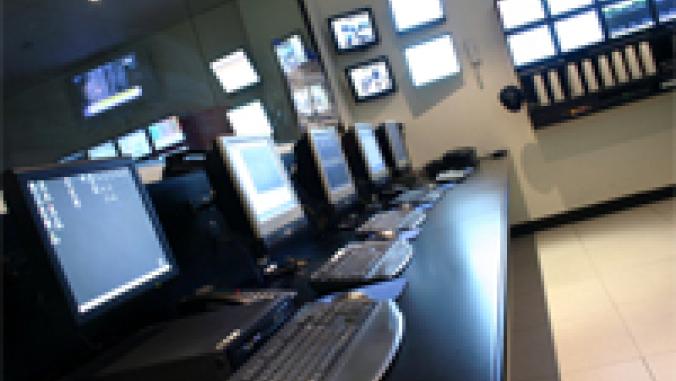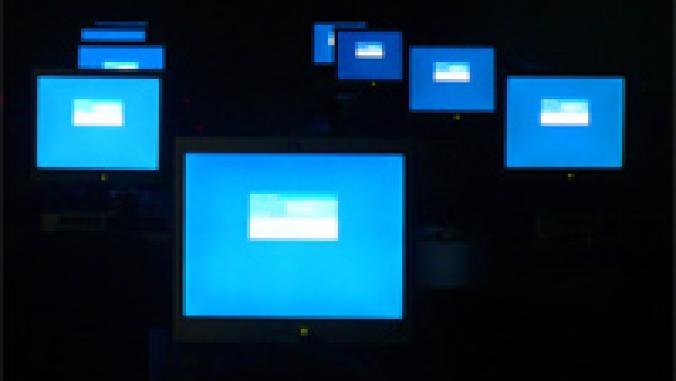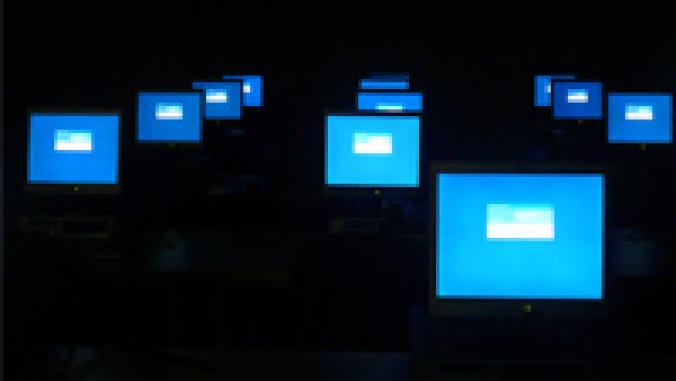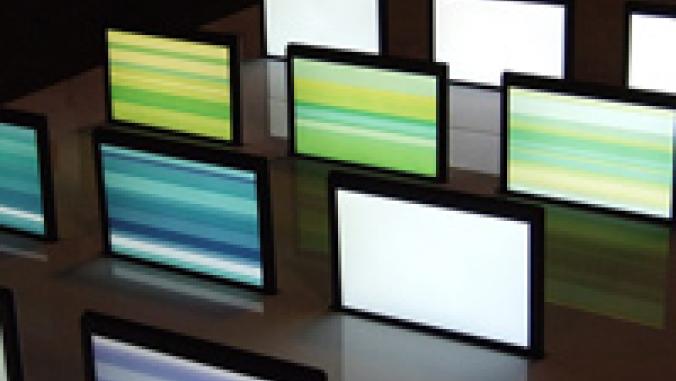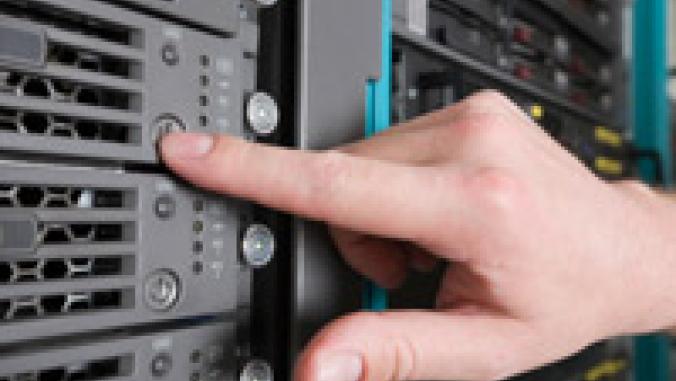Solid State Drives -- How Green Are They for IT?
Solid state drives are an emerging storage technology that has been getting increasing press over the last year due to its availability as an option for laptops and, in certain segments, for IT sites. Many claims have been made on behalf of SSDs, including that they are faster and greener and that, as such, they represent the future of disk storage. In this column, Andrew Binstock reports on whether they in fact are greener than traditional hard disks for the enterprise.
Solid state drives (or SSDs) are an emerging storage technology that has been getting increasing press over the last year due to its availability as an option for laptops and, in certain segments, for IT sites. Many claims have been made on behalf of SSDs, including that they are faster and greener and that, as such, they represent the future of disk storage. In this column, I look at how the technology works and why they're not greener nor a widespread alternative to hard disk drives.
Before diving into the topic, it's important to be clear what I am referring to as SSDs, as the term is already in the process of corruption. I am referring to drives made up of flash memory, not the DRAM disk products that have been around for decades for sites that need high-speed disk I/O. Those DRAM-based drives are very much alive in various enterprises. They are very fast, extraordinarily expensive, and use vastly more power than their hard disk (HDD) counterparts.
Flash memory-based SSDs (from here on, I will use SSD to refer only to these drives) use the same technology that you find in digital cameras, MP3 players, and other consumer devices. Flash memory storage is characterized by low prices and a compact form factor. Inexpensive flash memory also has a poor performance profile for writes, which anyone who has waited for their digital camera to record a shot and be ready for the next one can attest to. However, flash device can be fast for reading. The fast flash drives, however, are expensive.
For example, Microsoft Windows Vista is endowed with a feature called ReadyBoost that allows a user to stick a USB thumbdrive into a PC and the operating system will use the drive to extend available system RAM. The USB drives that are ReadyBoost-certified cost about twice as much as those that are not --- the difference being for the speed up.
The SSDs that are now appearing in laptops have a similar profile to ReadyBoost thumb drives: they are compact, fast on reads, and expensive. They also are low capacity. Dell, for example, offers laptops with 64GB. (128GB drives are coming shortly.) The 64GB drive retails for $739 and equivalent models cost nominally less at discount hardware vendors such as NewEgg.com. $10/GB is about the floor currently, making and SSD more than 40 times as expensive as HDDs on a dollar/GB scale.
Laptops, however, are not the only usage for SSDs. Some enterprises buy larger SSDs from specialty vendors for doing transactional work where speed is such a premium that cost is no object. These drives are the ones that are advanced as being the portend of things to come. And the promotional material touts that because SSDs have no moving parts, they consume less power. (For example, here is a quotation from STEC, a manufacturer of Zeus SSDs for the enterprise: "Without motors to spin or parts to move, ZeusIOPS consumes about a third of the power of a typical data center disk drive and requires far less cooling.")
This reinforces an incorrect perspective, namely that moving parts consume more power than solid-state components. To be quite blunt, this has not been true for decades. Processors consume far more power than disks, often by an order of magnitude. To wit, most desktop processors today require 50-100 watts, while HDDs typically require 6 to 12 watts. And using published numbers, HDDs also beat out SSDs on power consumption. The Western Digital VelociRaptor HDD, which is the fastest widely available enterprise disk drive today, uses 6.1 watts when active and 4.5 watts when idle. STEC's Zeus SSD, which is similarly targeted at enterprises, uses 8.4 watts when operating and 5.4 watts at idle. That is, SSDs are slightly worse on power consumption than HDDs. (There are of course HDDs with higher and lower power consumption. But I wanted to use the numbers for the fastest available drive.) On a watt/GB basis, HDDs outperform SSDs by a larger margin. In other words, SSDs are not greener from a power-savings point of view than HDDs.
I don't want to give the wrong impression of SSDs. They are an important specialty product. Whether they are the future of the industry is most unclear. It's not simply a question of prices coming down. There are technological challenges as well. The most important is that as the bit density of a drive increases, the number of times you can write data to the flash memory declines. If this problem can be solved and prices do in fact decline dramatically, SSDs could see a growing niche. But that niche will not be won on the basis of power savings.
Before diving into the topic, it's important to be clear what I am referring to as SSDs, as the term is already in the process of corruption. I am referring to drives made up of flash memory, not the DRAM disk products that have been around for decades for sites that need high-speed disk I/O. Those DRAM-based drives are very much alive in various enterprises. They are very fast, extraordinarily expensive, and use vastly more power than their hard disk (HDD) counterparts.
Flash memory-based SSDs (from here on, I will use SSD to refer only to these drives) use the same technology that you find in digital cameras, MP3 players, and other consumer devices. Flash memory storage is characterized by low prices and a compact form factor. Inexpensive flash memory also has a poor performance profile for writes, which anyone who has waited for their digital camera to record a shot and be ready for the next one can attest to. However, flash device can be fast for reading. The fast flash drives, however, are expensive.
For example, Microsoft Windows Vista is endowed with a feature called ReadyBoost that allows a user to stick a USB thumbdrive into a PC and the operating system will use the drive to extend available system RAM. The USB drives that are ReadyBoost-certified cost about twice as much as those that are not --- the difference being for the speed up.
The SSDs that are now appearing in laptops have a similar profile to ReadyBoost thumb drives: they are compact, fast on reads, and expensive. They also are low capacity. Dell, for example, offers laptops with 64GB. (128GB drives are coming shortly.) The 64GB drive retails for $739 and equivalent models cost nominally less at discount hardware vendors such as NewEgg.com. $10/GB is about the floor currently, making and SSD more than 40 times as expensive as HDDs on a dollar/GB scale.
Laptops, however, are not the only usage for SSDs. Some enterprises buy larger SSDs from specialty vendors for doing transactional work where speed is such a premium that cost is no object. These drives are the ones that are advanced as being the portend of things to come. And the promotional material touts that because SSDs have no moving parts, they consume less power. (For example, here is a quotation from STEC, a manufacturer of Zeus SSDs for the enterprise: "Without motors to spin or parts to move, ZeusIOPS consumes about a third of the power of a typical data center disk drive and requires far less cooling.")
This reinforces an incorrect perspective, namely that moving parts consume more power than solid-state components. To be quite blunt, this has not been true for decades. Processors consume far more power than disks, often by an order of magnitude. To wit, most desktop processors today require 50-100 watts, while HDDs typically require 6 to 12 watts. And using published numbers, HDDs also beat out SSDs on power consumption. The Western Digital VelociRaptor HDD, which is the fastest widely available enterprise disk drive today, uses 6.1 watts when active and 4.5 watts when idle. STEC's Zeus SSD, which is similarly targeted at enterprises, uses 8.4 watts when operating and 5.4 watts at idle. That is, SSDs are slightly worse on power consumption than HDDs. (There are of course HDDs with higher and lower power consumption. But I wanted to use the numbers for the fastest available drive.) On a watt/GB basis, HDDs outperform SSDs by a larger margin. In other words, SSDs are not greener from a power-savings point of view than HDDs.
I don't want to give the wrong impression of SSDs. They are an important specialty product. Whether they are the future of the industry is most unclear. It's not simply a question of prices coming down. There are technological challenges as well. The most important is that as the bit density of a drive increases, the number of times you can write data to the flash memory declines. If this problem can be solved and prices do in fact decline dramatically, SSDs could see a growing niche. But that niche will not be won on the basis of power savings.

